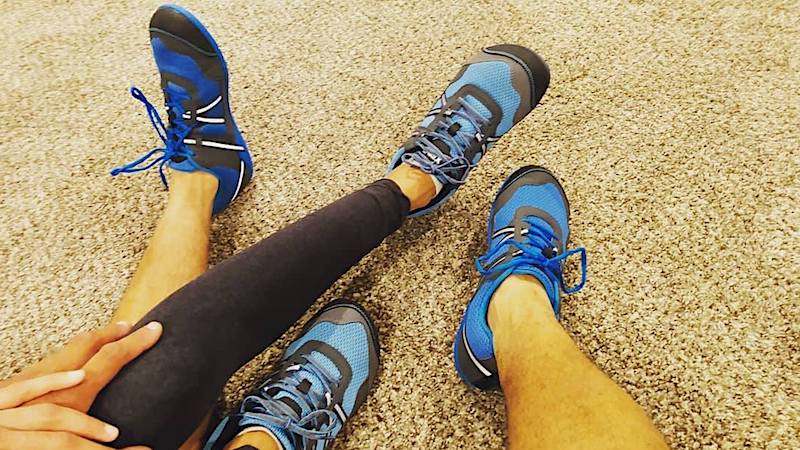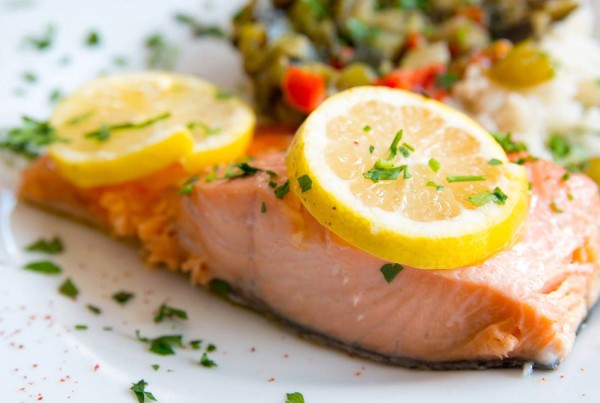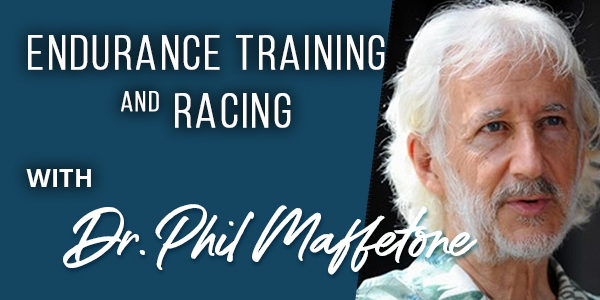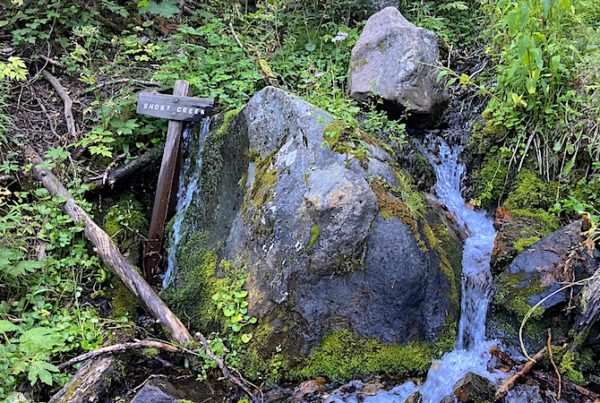
Seven steps to better footwear, plus 10 tips for better fit
Most running shoes are worn by non-runners, perhaps because people think they’re comfortable — or a cool fashion statement.
Marketing hype rules in the world of sports footwear, with advertising leading to the literal worshipping of favorite brands and literally hundreds of models. Companies with the biggest budgets control the industry, and the hype. Enter Brooks, New Balance, Asics, Adidas, Nike and others who sponsor athletic events, teams and athletes as part of their massive and aggressively deceptive advertising programs.
Buy a $200 pair and you mistakenly feel like a better athlete. However, it’s all in your head rather than on your feet. The truth is you won’t perform any better, whether during a marathon, walkathon, tennis match or shopping — as shoes don’t improve performance.
Shoes will not correct poorly functioning feet, a bad gait, low energy, even under- or overtraining. However, shoes can worsen these problems. So the focus when choosing the best footwear should not be on hype or price — but rather what’s healthy for your feet, most comfortable, and what does not promote injuries.
This makes finding the best shoes more difficult.
Why so many running shoes in the marketplace? Marketing. Through their branding, companies also influence media, which conveniently influences consumers — if you’ve ever read a magazine running-shoe review you’ll see their top recommendations are usually associated with the most ads from that company. The hefty cost of most shoes is due, in great part, to the hefty marketing budgets. Consumers literally pay to be told how great the shoes are.
While companies may test their shoes on machines for such factors as wear and tear, they don’t scientifically research and test most shoes for function on actual runners. That’s best left to independent scientists, with an exploding new arena of research yet to show much practical information for individuals.
Various studies include virtually all aspects of shoes from heel to toe, including height differences, midsole thickness, max and minimalist cushioning, bending stiffness and traction, even lacing.
This article is not a review of what the best running shoe might be, but more importantly how you can individualize the process to find the pair best for your particular feet. I will continue updating the science to counter the hype that remains the biggest feature in the wild world of running-shoe debate.
The biggest hype around sports shoes is that they are needed to prevent injury. Yet, in the past few decades, this has never been shown scientifically to be true. Clinicians, on the other hand, have known during this period that many shoes contribute to injuries. This was evident to me beginning 40 years ago, when high numbers of athlete and non-athlete patients alike started wearing shoes with increased thickness and support; the damage was not dissimilar to wearing dressy high-heels. (Eventually, it was evident that many people were addicted to wearing over-supported shoes, not unlike high-heels). In addition to the influence of bad shoes, many foot and other mechanical problems are due to muscle imbalance or other intrinsic foot issues, trauma and micro-trauma, improper shoe size. Put on the perfect shoe with a foot problem and impairment usually continues. (see below).
There really is no debate. The best thing for your feet is nothing. Being barefoot from the earliest age is clearly a healthy habit, helping the feet develop better function through stronger and healthier muscles and tendons, ligaments and skin, bones and joints, circulation and nerves, body balance and prevention of injury. Barefoot activity can even help the brain. As soon as a shoe covers the foot, the process of impairment, whether minor or major, begins. However, there are times when wearing a shoe, sandal or moccasin is needed. So it may be more of a question of which ones are less harmful and worn for the least amount of time.
These and other findings led me to write the first book on the dangers of running shoes and the benefits of barefoot running (Fix Your Feet, now out of print but updated information is contained in articles on this website, and in my two Big Books).
Most people can sort through the hype and find the right shoes on their own, a goal of this and other articles I’ve written. If your feet have special needs (not including normal pronation) a knowledgeable healthcare practitioner (not a shoe ad or sales person) is the place to start.
Seven Steps to better running shoes
- My first recommendation about shoes, whatever type, is to avoid them as much as possible. At all ages, being barefoot often is not only healthy for the feet, but knees, hips, pelvis the entire spine, even up into the head. The reason for wearing shoes is to protect the bottoms of the feet, but we should not sacrifice the rest of the foot to accomplish that. Moreover, when we do need to wear shoes, healthy feet tolerate the stress of shoes better.
- Simplicity is a key recommendation for finding your best shoe. The flattest and least supportive ones create a condition most similar to being barefoot. This general shoe category is now called minimalist, opposite end of the spectrum from thicker, very supported and highly cushioned. At one time, all sports shoes were minimalist (until the industry went the other way). Minimalist refers to shoes that are more flexible, and low shoe mass, stack height and heel-toe drop. They are shown to improve running economy (VO2max) relative to thicker more supported shoes, important in all sports and or just hanging out, making them the only category of shoes that influence performance in a way similar to being barefoot. A better gait is a related benefit: Run a dozen or so strides in your shoes; then take them off and run barefoot. The difference can be dramatic. Being barefoot is natural so your foot lands more forward instead of on the heel. Thicker shoes force you to land on the back part of the foot, often heel-striking, and often associated with a poor gait, can slow you down, and raise injury risk.
- Fit not fad is my motto to finding your best shoe. Shoes that fit both feet nearly perfectly are the goal. Not an easy task with mass-produced items that have no standard size structure (a size 10 from one company may be very different from another). Here’s an important article on how to find the best fit (see list below).
- If you’re wearing bad shoes, changing to better shoes requires a transition period. For example, if you wear thick supported shoes and want to switch to a minimalist shoe or run barefoot, it should be done cautiously, perhaps with an in-between shoe for a couple of months, so your feet properly adapt. Too rapid a change can result in stress on the feet and mechanical injury. More time is needed for runners due to the increased stress of running.
- Soft shoes sell well. Whether it’s the slipper effect or what, a wearer’s first impression in a soft-soled shoe is comfort. But studies show these shoes can be problematic. They can reduce economy and performance. Instead, a shoe that’s less-soft — stiffer, especially mid-sole — functions better. These can also be just as comfortable when properly fitted.
- Thicker shoes of any type reduce our ability to sense the ground. This is an important feature used by our bodies, especially the brain, to adapt to mechanical stress that everyone encounters while on two-feet. Being unaware of the ground is akin to running in the dark without a light or running on ice.
- Comfort is a key. All shoes should be comfortable to wear for long periods. They don’t require a break-in period but should feel great the moment you put them on.
People who have followed my work for years know what I wear, but just in case: Most of my day is shoeless. I’ve spent a lot time working out the same way. I do wear shoes most times away from home. When I wear shoes, they are minimalist; usually the most minimal of the minimalists. Likewise, for casual or dress use.
A great shoe and fit, with healthy feet, also means you should not need added supports like orthotics, heel lifts and other items in the shoe.
Related Links:
How to treat plantar fasciitis naturally
Soft-taping to improve foot and ankle function
Children’s shoes cause health problems in adulthood
10 keys to a better shoe fit
You can get the best fit by following some key points:
- Never assume you’ll take the same size as your previous shoe, even if it’s the same type or model. Shoe sizes are not standardized.
- Rely on fit and comfort rather than any particular size.
- Always plan on spending adequate time shopping for shoes. Don’t rush — if you’re short on time, postpone it and set time aside for this important excursion. You may not find the right shoe in the first store you visit. Most outlets carry only a few of the many shoes on the market.
- Always try on both shoes. First, try on the size you think would fit best then walk on a hard floor (not carpeted). Even if that size feels fine, try on a half-size larger. If that one feels the same, or even better, try on another half-size larger. Many people don’t realize that a larger shoe may actually feel and fit better.
- Continue trying on larger half-sizes until you find the shoes that are obviously too large. You know especially by the heel — it will start coming off when you walk. Then go back to the previous half-size — more often that’s the pair that best matches your feet. There should be at least a half-inch between your longest toe and the front of the shoe for most shoes.
- Each time you try on a pair of shoes, find a hard surface to walk on rather than the thick soft carpet in shoe stores, where almost any shoe will feel good. If there’s no sturdy floor to walk on, ask if you can walk outside (if you’re not allowed, shop elsewhere).
- You may also need to try different widths to get the best fit, although many shoes don’t come in different widths. The ball of your foot should fit comfortably into the widest part of the shoe without causing the shoe to bulge.
- Using comfort as the main criterion, don’t let anyone say you have to break them in before they feel good. The best shoes feel good right away. Online shoes may cost less, but be prepared to ship them back if they don’t fit just right.
- If the difference between your two feet is less than a half-size (as per the Brannock device many shoe stores use), fit the larger foot. If you have a significant difference of more than a half-size between your two feet, it may be best to wear two different-size shoes. (How you accomplish this is up to you.)
- Socks. When trying on shoes, wear the socks you would normally wear in them. Socks are not necessary but are mainly for added comfort, especially in avoiding blisters and chaffing. Like shoes, socks can be too tight, contributing to foot stress and problems. For most situations, socks should be thin, with thicker ones requiring a half-size larger shoe. Whether low-cut or above the ankle, or natural fibers such as wool or cotton (my preference) or synthetics, is up to you. But, like shoes, socks should fit well, and not interfere with shoe fit.








